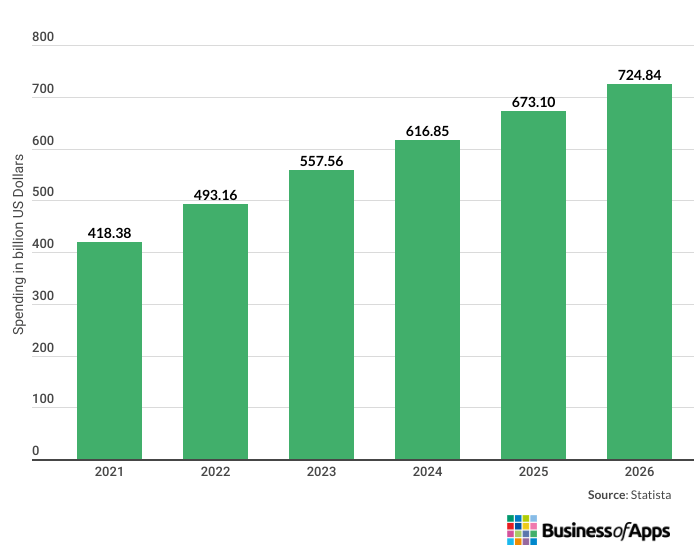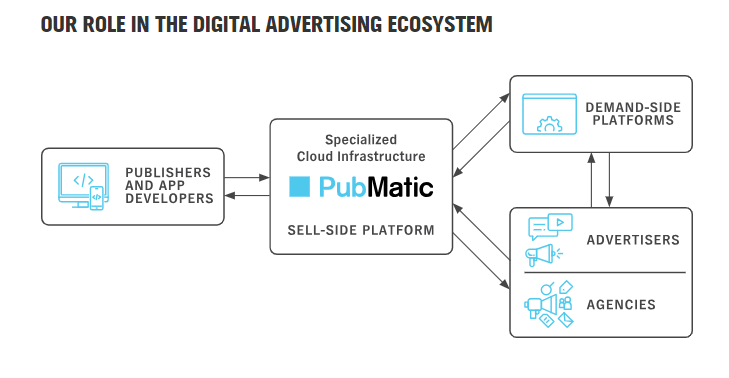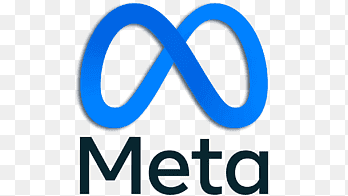App advertisers and publishers can save time, money, and resources when they use ad exchanges to sell digital ad space and target new audiences.
Access to ad exchanges comes via an ad exchange platform. And while an ad exchange platform offers many benefits, buyers and sellers do need plenty of information before choosing the right one.
Reports suggest spending on mobile advertising will grow by 50% in 2023, reaching $363 billion USD globally. And with much competition for in-app monetization, advertisers and publishers can stay ahead of the curve with an ad exchange platform.
That’s why we’ve formulated this guide – to help you understand how ad exchanges work, what ad exchange companies do, and which ad exchange platform might give you the edge you need.
With benefits like audience targeting, ad automation, anti-fraud protection, and real-time performance insights, an ad exchange platform can transform results. So, we are sharing more details on ad exchanges and how to choose the best ad exchange platform for your needs.
What are ad exchanges?
Ad exchanges are virtual marketplaces where app advertisers and publishers buy and sell digital ad space, or inventory. They’re adtech platforms that form an essential part of the programmatic ecosystem. And they’re different from ad networks for apps since they give users control over an open marketplace.
Publishers, ad networks, SSPs, DSPs, advertisers, and ad agencies can all trade ad inventory with each other using an ad exchange platform. Ad exchanges use real-time bidding (RTB) and real-time auctioning to sell ad space and display automated ad impressions.
Advertising formats that can feature in mobile ad exchanges include:
- Native advertising
- Display advertising
- Video
- Mobile games
- In-app ad inventory
Ad exchanges use a media buying process to auction off different types of digital marketing ads, including ad impressions and video ad inventory. An ad exchange platform will also be open and transparent when it comes to available rates and deals.
Top Ad Exchanges
| InMobi | Driving Real Connections | View more |
Today, many tech tools support ad exchanges, like Supply-Side Platforms or Sell-Side Platforms (SSPs). Sometimes this results in people talking about ad exchanges and SSPs as being the same thing.
However, both SSPs and DSPs–aka Demand-Side Platforms–will feature in an ad exchange.
Types of mobile ad exchanges
Advertisers, ad networks, and DSPs can all buy digital ad space through an ad exchange platform. But, before considering which is best for your needs, let’s review some definitions.
Open ad exchanges
Also known as an open auction or open marketplace, an open ad exchange is a digital marketplace that gives sellers, buyers, ad networks, and advertisers access to digital ad inventory. These types of mobile ad exchanges offer openness and transparency. But they’re usually quite exclusive since many make up part of an SSP.
The benefits of open ad exchanges include gaining exposure to a broad range of potential buyers and having a better sense of control over pricing.
Private ad exchanges (PMPs)
Also known as private marketplaces (PMPs), Private Ad exchanges are closed mobile ad exchanges. This means they only offer deals to certain publishers and advertisers.
Operating within a more closed sense of trading means buyers and sellers get an increased level of protection. And this includes better participant security which can lead to lower rates of ad fraud.
Such exclusivity can also mean reduced numbers of buyers and less demand. In general, though, publishers get an increased sense of control over bid prices and exchange conditions.
Preferred ad exchanges
Preferred ad exchanges offer exclusive deals to preferred buyers. Publishers will draw up a shortlist of buyers they want to sell their inventory to, at a negotiable price.
This closed approach can result in higher CPMs. But publishers will need to be well-known to get shortlisted.
Mobile ad exchanges vs ad networks
So why would an advertiser use mobile ad exchanges over ad networks for apps?
Ad networks offer secured arrangements with publishers. They’ve already sourced a range of relevant and approved publishers that can push ads out on the advertiser’s behalf. And, by reducing the amount of work the buyers need to do, ad networks offer convenience and efficiency.
Mobile ad exchanges, on the other hand, leave buyers and sellers free to negotiate deals for themselves in the ad exchanges.
So, the key difference is that publishers and advertisers must agree to an ad network’s terms to access it. Ad networks don’t allow the freedom to go to alternate providers or choose other options. But the benefit for users is that ad networks will do the work for you in return for a fee, and your agreement to their closed terms.
Graphic highlighting how publishers and advertisers fit into an ad exchange

Source: Appsflyer
How do ad exchanges work?
Buyers and sellers need to integrate their SDK with a mobile ad exchange to access it. But the process differs between publishers and advertisers.
For publishers
Publishers are likely to follow these stages:
- The ad exchange records each page of their available inventory.
- The ad exchange reviews the potential for turning each available ad space into a digital impression.
- Then it decides how to collect information from visitors, often via cookies.
- They use this information to influence their process for selecting relevant bidders.
- In order to gain bidders, publishers must offer their ad inventory through an SSP.
For advertisers
Advertisers are likely to follow these steps:
- Advertisers connect to ad exchanges via their DSP.
- They then suggest a maximum cost-per-impression they’re willing to pay.
- The ad exchange matches demand with available impressions.
- They notify new bidders of available inventory via a bid request.
- An automated or programmatic bidding process begins.
- Advertisers run programmatic bids using Real Time Bidding (RTB) based on the auction rules that were set out during the SDK integration.
So how do ad exchanges generate revenue? They take a percentage of the commission from every dollar spent. And when ads run at scale, this amounts to sizeable revenues.
Why are ad exchanges important?
Mobile ad exchange platforms are important for effective app marketing for many reasons. And we’ve outlined some of the key reasons below.
Wider reach
When advertisers use an ad exchange platform it helps them target users that are difficult to attract, which results in a broader audience reach. Advertisers can do this by bidding on the publisher’s inventory that is targeting the audiences on their marketing wishlists.
Real-Time Bidding (RTB)
RTB enables instant, streamlined, and targeted ad purchasing. It lets advertisers bid for single ad impressions and happens in the blink of an eye. Programmatic bidding means thousands of auctions happen every day with ad impressions reaching thousands of mobile app users as a form of in-app advertising.
RTB also facilitates better targeting through more relevant ads and better buyer visibility. And with this increased knowledge, publishers may find it easier to leverage higher premiums on ad placements to gain higher ROI.
Focused targeting
Mobile ad exchanges let advertisers and publishers target specific audiences with transparent deals and ad prices. And this ability to be more precise with targeting can add value to publishers’ ad inventory.
For instance, a gaming app may already have a strong Gen Z user base but want to seek out more middle-aged or retro gamer demographics. And through an ad exchange, they can do this.
Performance insights
Impression shares, outranking shares, and position above rates are all examples of the types of performance insights from ad exchanges auctions. And using such insights can help inform strategy and lead buyers and sellers toward decisions that maximize their returns.
What does a mobile ad exchange platform do?
An ad exchange platform provides access to an ad exchange, which is a virtual marketplace that sits at the heart of the programmatic ecosystem. It allows buyers and sellers to review and select the best app advertising deals on offer in the marketplace.
Estimates suggest growth in global programmatic ad spending may reach $725bn by 2026, which is an increase from $400bn in 2021. And with increased competition comes the need for innovation and efficiency to stay ahead. So what is it that a mobile ad exchange platform does to help?
Global programmatic advertising spending from 2017 to 2026
Source: Statista
Offers a real-time marketplace
The RTB (Real-Time Bidding) feature in ad exchanges enables fast, cost-effective, and efficient processing. It also gives advertisers a strong sense of control over their purchasing behavior.
For publishers, a real-time marketplace offers improved control too, for example, targeting location-based audiences to reduce the risk of fake impressions and ad fraud. Aspects such as better availability of ad space and bid rates make it much easier for publishers to optimize their inventories and increase returns.
Maximizes ROI & ad revenues
Programmatic app ads available through ad exchanges are usually measured by CPM i.e. cost per thousand impressions. And because of the great variety of pricing to choose from, advertisers are more able to find lower-cost CPMs through an ad exchange platform.
More targeted ads also mean publishers cutting out ad impressions on irrelevant audiences that waste resources.
Provides high-quality inventory
A positive aspect for publishers in mobile ad exchanges is the ability to create private sub-exchanges. In them, publishers can invite selected advertisers to join them and control inventory quality. Being able to control inventory distribution can also boost quality and lead to improved ROI.
Improves campaign planning & execution
An ad exchange platform comes with all sorts of features and inclusions. For instance full-stack, 360 monetization platforms often include automated campaign management and delivery features.
Leaning into automation can save time and leave space for data analysis and creativity. Better data analysis can improve future campaign performance and creative thinking can lead to more innovation. And when 70% of app developers say they struggle to find the time for innovation, using an ad exchange platform can make all the difference.
Offers real-time analytics
Many platforms include integrated reporting dashboards and analytics. And real-time analytics dashboards can help to simplify campaign management. Using a single dashboard, users can create continuous feedback loops on campaigns to leverage immediate, data-driven improvements.
Efficient management system
An ad exchange platform is a form of ad management software that helps marketers reduce resources and improve their ability to manage multiple campaigns aspects like bidding on ad space and running ad campaigns across SEM and social media.
Key features of mobile ad exchange platforms
App owners and marketers have a wide variety of options for choosing the best mobile ad exchange platform. To make a positive selection, here’s an additional list of the key areas to review before considering which platform offers the most credible return for your investment.
Anti-fraud capability
Not all ad platforms uphold the same degrees of security. Programmatic ad impressions pass through many different platforms and good ad exchanges should partner with high-quality traffic sources that use ad-fraud protection measures.
For instance, some ad exchange platforms make use of prebid blocklists. These can detect fake traffic before it shows up in an auction and black fraudulent activity. Plus, it’s an area to be careful of since, according to our previous research, the rate of fraudulent app installs is 30% for iOS and 25% for Android.
Data centers
As a bare minimum, good ad exchanges should have plenty of data centers in the area it operates. Advertisers and publishers may find they gain a better quality end-user content experience when they choose an ad exchange platform with ample data centers.
Bidstream optimization
A solid ad exchange platform should be able to analyze advertisers’ buying habits while filtering device, geo, and channel data. All these filters will help to optimize bidstream traffic quality.
Growth support
Several mobile ad exchange platforms include the choice of extra support from account managers or business development managers. These individuals may hold expertise in programmatic buying and selling. And since navigating ad exchanges can be complex and time-consuming, this may be particularly beneficial.
Mobile Ad exchange platform example – PubMatic
Source: PubMatic
To offer an example of one of many ad exchanges, PubMatic is a leading platform for buyers and sellers. Pubmatic’s Sell-Side Platform runs off a specialized cloud infrastructure that allows buyers to scale campaigns on a single platform. It includes a bespoke fraud program too, which may prevent wasting the budget on fraudulent ad impressions.
Work with the top mobile ad exchange platforms
Ad exchanges are vital components of the programmatic app advertising world and let publishers and advertisers trade ad inventory and buy ad space. And this is all through a Real-Time Bidding process that works at speed and scale. Buyers and sellers can access ad exchanges with mobile ad exchange platforms, but should give careful consideration to the scale, experience level, and time commitment needed for each one.
With advantages in precise audience targeting, automated delivery of ad impressions, and real-time performance monitoring, ad exchanges let advertisers improve their ROI. And for publishers, greater and more precise control over ad inventory can increase revenue generation. But it can also enable continuous testing that promotes innovation and leads to higher-quality inventory.














